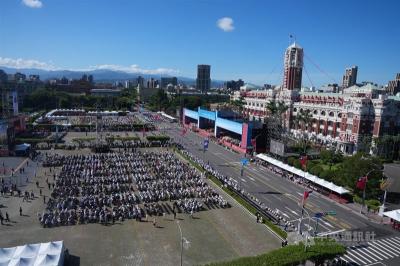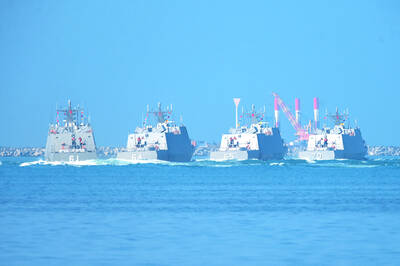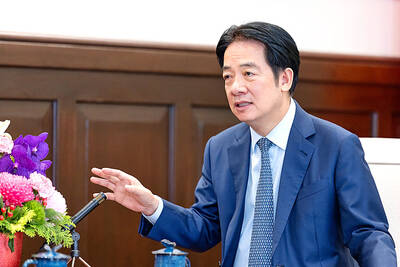A massive and coherent economic stimulus must take place soon to counter the global economic downturn, UN experts said in a report published yesterday in Doha.
The UN called for “massive economic stimulus packages that are coherent and mutually reinforcing on a global basis, and linked with sustainable development imperatives” in its Report on World Economic Situation and Prospects 2009 presented at an international ministerial conference on development financing in the Qatari capital.
The packages “should come on top of the liquidity and recapitalization measures already undertaken by countries in response to the economic crisis,” the report added.
UN economists also proposed “stronger regulation of financial markets and institutions, adequate international liquidity provisioning, an overhaul of the international reserve system and a more inclusive and effective global economic governance, to prevent against any future repetition.”
The report made dire projections for economic growth across the globe next year, with an overall drop in per capita income and developed nations most affected by the global financial crisis.
Developed countries will see a 0.5 percent decline in output, compared with an average growth of 5.3 percent in transition economies and 4.6 percent in developing countries.
World growth will most likely not exceed one percent next year, compared to 2.5 percent this year and rates varying between 3.5 and 4 percent in the four previous years.
US growth will decline by one percent, with the euro zone declining by 0.7 percent and Japan by 0.3 percent. Growth in India, Brazil and Mexico is slated at 7 percent, 2.9 percent and 0.7 percent, respectively.
“But given the great uncertainty prevailing today, a more pessimistic scenario is quite possible,” the report said.
“If the credit crisis continues and confidence is not restored in the financial sector in the coming months,” UN experts explain. “This would bring economic growth in developing countries down to 2.7 percent, dangerously low for their ability to sustain poverty reduction efforts and social and political stability.”
The US has already launched an economic recovery plan worth US$700 billion and China, the world’s fourth-largest economy, has initiated an unprecedented 4 trillion yuan (US$590 billion) stimulus package.
But steps to inject money in the banking system and lower interest rates have failed to restore confidence.
“With limited space for monetary stimulus, fiscal policy options are needed to reactivate the global economy,” the report said.
It said the total cost of US government action in the face of the financial meltdown has reached US$7 trillion, and that the figure could be around US$11 trillion globally.
Rob Vos, the UN’s Development Policy and Analysis Division chief and lead author of the study, said a fiscal stimulus of the “same order of magnitude” may be needed to keep the world economy from shrinking next year.
But the figures may not be as high as US$7 trillion or US$11 trillion because “those are commitments rather than money actually spent,” he said.
“A stimulus of around one to two percent of GDP across the world should be enough to stave off negative growth,” Vos said.
“Maybe not for 2009 but in 2010 there could be a recovery [if the stimulus package goes ahead] unless markets fall further in the meantime.”
Lauding a “fiscal stimulus to be provided in an internationally coordinated fashion,” the UN economists in the report perceive the crisis as “an opportunity to align fiscal stimulus packages with long-term sustainable development goals,” calling for public investment in infrastructure, food production, health, education and renewable energy sources.
They suggest further scrutiny of reasons behind the weakness of the global financial system, which uses the dollar as its reserve currency.
“With net indebtedness of the United States still growing — to about US$2.7 trillion at the end of 2008, up from US$2.5 trillion in 2007 — a disorderly adjustment of global imbalances and a hard landing of the dollar remain major downside risks,” the experts said.
“In that case, investors might again embark on a ‘flight to safety,’ but this time away from dollar-denominated assets instead of to them, pulling the US economy down further, and the global economy with it,” they said.

The Ministry of the Interior (MOI) is to tighten rules for candidates running for public office, requiring them to declare that they do not hold a Chinese household registration or passport, and that they possess no other foreign citizenship. The requirement was set out in a draft amendment to the Enforcement Rules of the Public Officials Election and Recall Act (公職人員選舉罷免法 ) released by the ministry on Thursday. Under the proposal, candidates would need to make the declaration when submitting their registration forms, which would be published in the official election bulletin. The move follows the removal of several elected officials who were

The Republic of China (ROC) is celebrating its 114th Double Ten National Day today, featuring military parades and a variety of performances and speeches in front of the Presidential Office in Taipei. The Taiwan Taiko Association opened the celebrations with a 100-drummer performance, including young percussionists. As per tradition, an air force Mirage 2000 fighter jet flew over the Presidential Office as a part of the performance. The Honor Guards of the ROC and its marching band also heralded in a military parade. Students from Taichung's Shin Min High School then followed with a colorful performance using floral imagery to represent Taiwan's alternate name

FOUR DESIGNATED AREAS: Notices were issued for live-fire exercises in waters south and northwest of Penghu, northeast of Keelung and west of Kaohsiung, they said The military is planning three major annual exercises across the army, navy and air force this month, with the navy’s “Hai Chiang” (海強, “Sea Strong”) drills running from today through Thursday, the Ministry of National Defense said yesterday. The Hai Chiang exercise, which is to take place in waters surrounding Taiwan, would feature P-3C Orion maritime patrol aircraft and S-70C anti-submarine helicopters, the ministry said, adding that the drills aim to bolster the nation’s offshore defensive capabilities. China has intensified military and psychological pressure against Taiwan, repeatedly sending warplanes and vessels into areas near the nation’s air defense identification zone and across

COVETED PRIZE: The US president would be a peace prize laureate should he persuade Xi Jinping to abandon military aggression against Taiwan, William Lai said US President Donald Trump should get the Nobel Peace Prize should he be able to convince Chinese President Xi Jinping (習近平) to abandon the use of force against Taiwan, President William Lai (賴清德) told a conservative US radio show and podcast in an interview. The US is Taiwan’s most important international backer, despite the absence of formal ties, but since Trump took office earlier this year he has not announced any new arms sales to the nation. Trump could meet Xi at the APEC summit in South Korea on Oct. 31 and Nov. 1. Lai, speaking on The Clay Travis and Buck Sexton